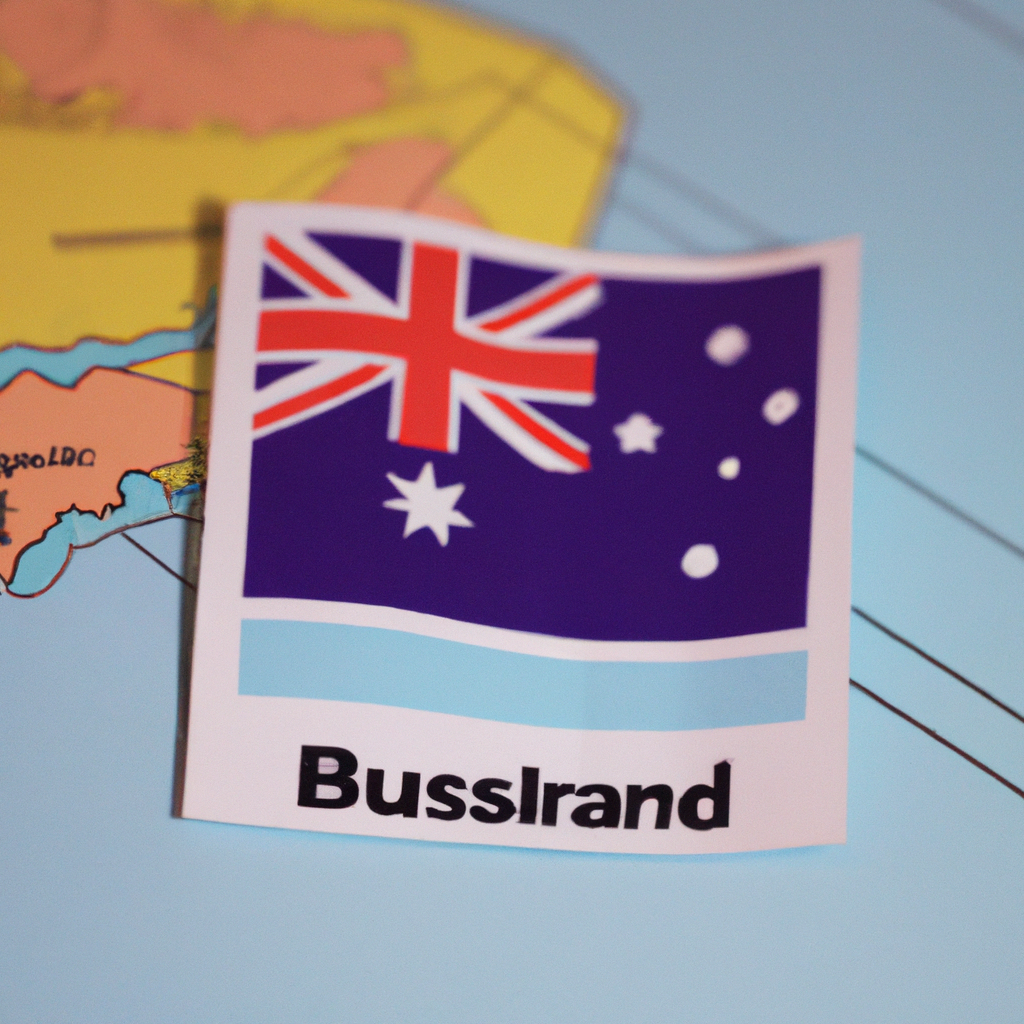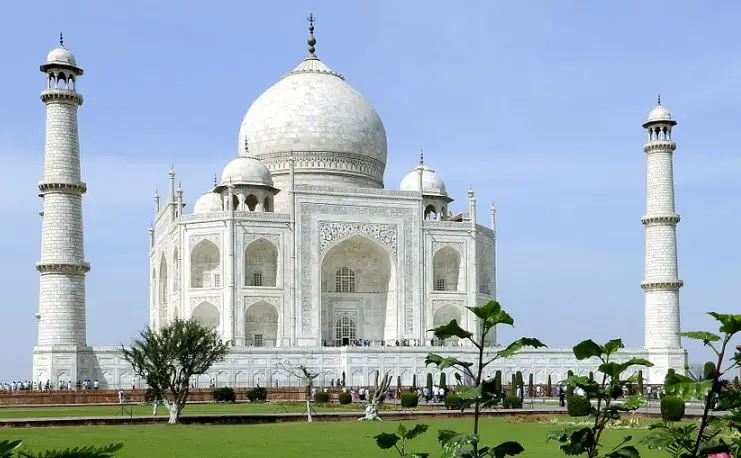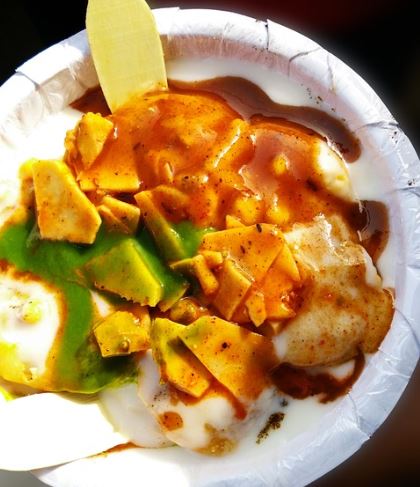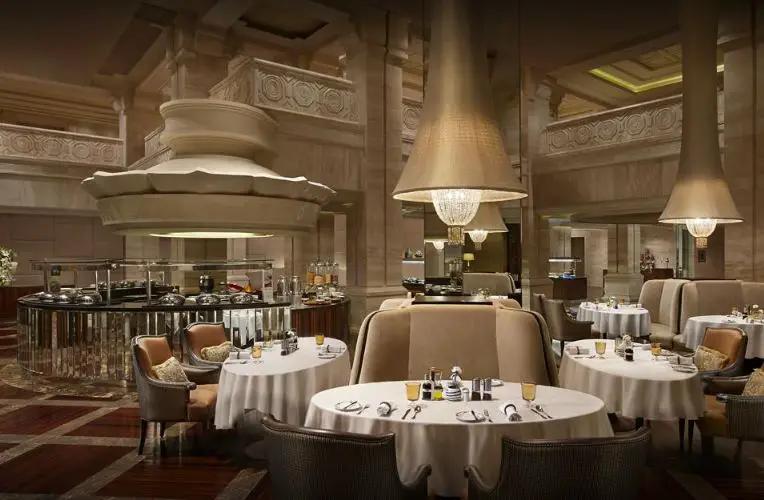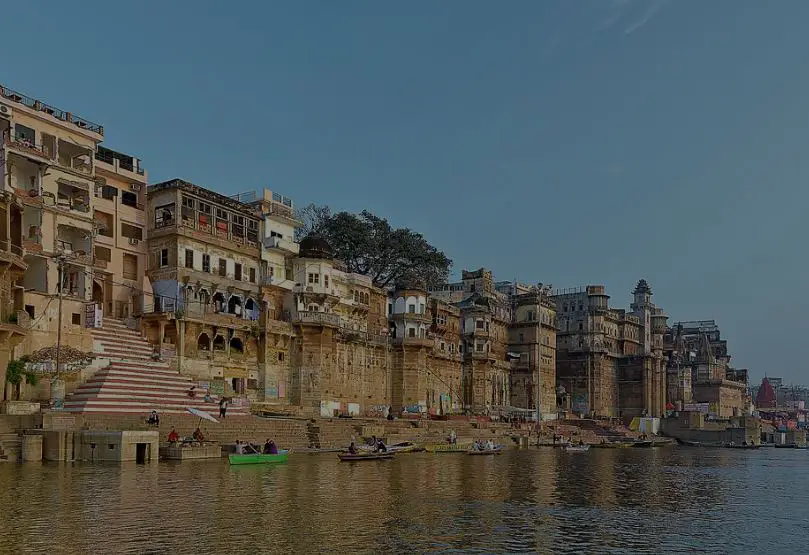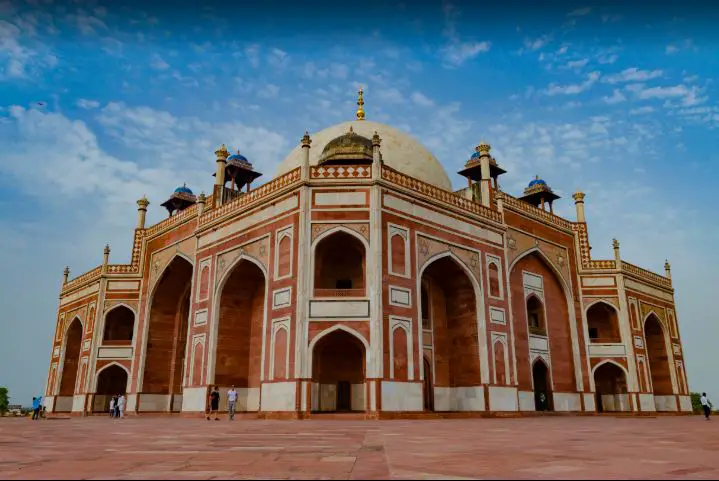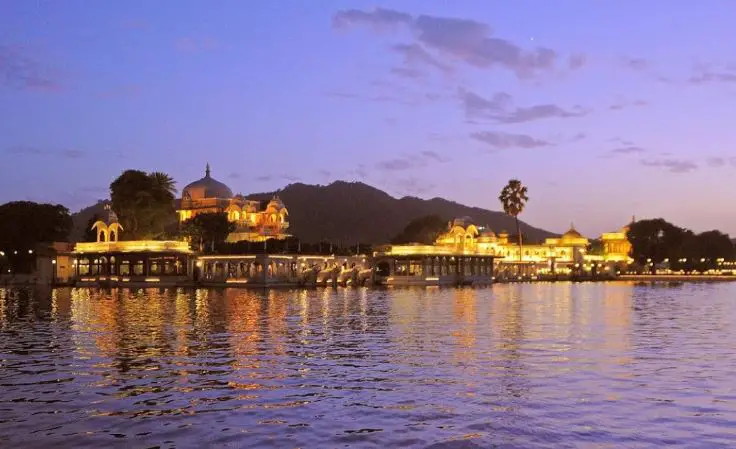Delhi, India: Interesting Facts,History, Things to do,Why to Visit
Post ByAdequate Travel
Delhi, India, is a city full of fascinating history, culture, and things to do. Home to 21 million people, Delhi is India’s capital and one of the largest cities in the world.This ancient city is one of the few places where old and new India live side by side. Delhi's unique blend of historical sites, bustling markets, grand architecture, and local flavor make it an ideal destination to explore. From exploring the chaotic streets, tasting authentic local dishes, to discovering hidden corners of the city, it's no wonder why Delhi is one of the most visited cities globally.Whether you want to relax or experience an exciting trip, Delhi will never disappoint you. There are plenty of interesting facts about Delhi, its colorful history, and exciting things to do.Ranging from sightseeing to shopping, Delhi has something for everyone.
India is a country located in South Asia. It is the seventh-largest country by land area and the second-most populous country in the world, with over 1.3 billion people. India has a diverse culture and is known for its rich history, spirituality, and contributions to various fields such as science, mathematics, and literature. The country is a parliamentary democratic republic, with a President as the head of state and a Prime Minister as the head of government. India is known for its Bollywood film industry, vibrant festivals, and cuisine. It is also an emerging global power and has a mixed economy, with agriculture, industry, and services being the major sectors. However, the country also faces challenges such as poverty, corruption, and unequal development.Explore the popular places in india, and immerse yourself in its vibrant culture.
Interesting facts
1. Incredible Cultural Diversity
India is known for its rich cultural diversity, with more than 2,000 distinct ethnic groups and over 1,600 languages spoken across the country. The country has a long history of various kingdoms, empires, and invasions, resulting in a diverse mix of cultures, traditions, and religions. Examples of this diversity can be seen in the different cuisines, festivals, music, dance forms, and clothing styles that vary from region to region.2. Ancient Civilization and Heritage
India is home to one of the oldest civilizations in the world, the Indus Valley Civilization, which dates back to 2500 BCE. The country is dotted with numerous UNESCO World Heritage sites, including majestic monuments like the Taj Mahal, Red Fort, Qutub Minar, and ancient cave systems like Ajanta and Ellora Caves. These architectural wonders serve as a testament to India's rich historical and cultural past.3. Largest Democracy in the World
India is the world's largest democracy, with a population of over 1.3 billion people. The country follows a parliamentary system of government, where citizens elect their representatives through a general election held every five years. The sheer scale and complexity of conducting elections in such a vast and diverse country make India's democracy truly remarkable.4. Yoga and Spiritualism
India is the birthplace of yoga and has been practicing it for thousands of years. Yoga is not only a physical exercise but also a spiritual practice that aims to unite the body, mind, and soul. It has gained immense popularity worldwide for its numerous health benefits. Many people from around the world travel to India to learn and experience authentic yogic practices in ashrams and retreat centers.5. Bollywood and Indian Cinema
India has the world's largest film industry, commonly known as Bollywood. Indian cinema produces thousands of movies every year in various languages. Bollywood movies are known for their vibrant song and dance sequences, larger-than-life storytelling, and colorful costumes. Indian cinema has a huge fan following both within the country and globally, contributing significantly to the country's cultural identity.6. Wildlife and Biodiversity
India is home to a diverse range of wildlife and ecosystems. It has over 100 national parks and more than 500 wildlife sanctuaries, including the famous Ranthambore National Park, Jim Corbett National Park, and Kaziranga National Park. These protected areas preserve endangered species like tigers, elephants, rhinoceros, and various bird species. India's rich biodiversity also extends to its marine life, with the Andaman and Nicobar Islands housing extensive coral reefs.7. Technological Advancements
India has emerged as a global leader in the field of information technology and software services. The country is known for its significant contributions to the technological sector, with numerous Indian IT companies making their mark internationally. Indian engineers and professionals have played a vital role in the development of various technological innovations, ranging from software development to space exploration.From museums to parks,india tourist attractions offer something for everyone, making it a versatile destination for all type of tourists.History of India
India has a rich and diverse history that dates back thousands of years. Here are some noteworthy points about the history of India:
Indus Valley Civilization (2600-1900 BCE)
The Indus Valley Civilization, also known as the Harappan Civilization, was one of the earliest urban civilizations in the world. It flourished in the northwestern region of the Indian subcontinent and was characterized by well-planned cities, advanced drainage systems, and standardized weights and measures. The cities of Harappa and Mohenjo-Daro were the major centers of this civilization.
The Vedic Period (1500-500 BCE)
The Vedic Period marked the arrival of the Indo-Aryans in the Indian subcontinent. It was during this time that the Rigveda, one of the oldest known religious texts, was composed. The society was primarily based on agriculture, and the caste system began to take shape. Vedas, Brahmanas, and Upanishads were significant literary works from this period.
The Mauryan Empire (322-185 BCE)
The Mauryan Empire, established by Chandragupta Maurya, was the first major centralized political entity in India. Under the rule of Ashoka the Great, the empire expanded considerably, followed by his conversion to Buddhism and the promotion of its principles within the empire. The empire also had a highly organized administrative structure and efficient governance.
Gupta Empire (320-550 CE)
The Gupta Empire is often referred to as the "Golden Age" of Indian history. It witnessed advancements in various fields such as mathematics, astronomy, literature, and arts. The famous mathematician Aryabhata and the celebrated playwright Kalidasa lived during this period. The Gupta Empire is also known for its promotion of Hinduism and the development of temple architecture.
The Delhi Sultanate (1206-1526 CE)
The Delhi Sultanate was a Muslim kingdom established in Delhi, marking the beginning of Islamic rule in India. Several dynasties, including the Mamluk, Khalji, Tughlaq, and Lodi dynasties, ruled during this period. Prominent architectural structures like the Qutub Minar and the Alai Darwaza were built during the reign of various sultans.
The Mughal Empire (1526-1857 CE)
The Mughal Empire, founded by Babur, extended its rule across most of the Indian subcontinent. It was known for its military prowess, cultural diversity, and grand architecture. Prominent Mughal rulers like Akbar, Jahangir, Shah Jahan, and Aurangzeb left indelible marks on Indian history. The Taj Mahal, Red Fort, and Fatehpur Sikri are examples of marvelous Mughal architecture.
British Colonial Rule (1757-1947)
British control over India began with the establishment of the East India Company. Through a series of political and military maneuvers, the British gained control over large parts of India. The British Raj, as it was known, brought significant social, economic, and political changes to the country. The struggle for independence led by figures like Mahatma Gandhi eventually resulted in India gaining independence in 1947.
Modern India
Post-independence, India underwent rapid changes in various sectors. The country adopted a democratic system of governance and embarked on a path of planned economic development. It faced challenges such as partition, communal tensions, and regional conflicts. However, India emerged as one of the world's largest democracies and has made notable progress in areas like science, technology, space exploration, and economic growth.
Exploring the rich heritage of historical sites in india is a journey through time and culture.Famous Things of India
Natural Wonders
- The Himalayas: The highest mountain range in the world, which spans across several states in India. Examples include Mount Everest, Kanchenjunga, and Nanda Devi.
- The Thar Desert: A vast desert located in the northwest of India, primarily in Rajasthan.- The Sundarbans: The largest mangrove forest in the world, located in the Ganges Delta.- The Backwaters of Kerala: A network of lagoons, lakes, and canals, famous for its scenic beauty.- The Valley of Flowers National Park: A UNESCO World Heritage Site located in Uttarakhand, known for its vibrant alpine flowers.Historical Monuments
- Taj Mahal: One of the Seven Wonders of the World, a majestic mausoleum in Agra, built by Mughal emperor Shah Jahan in memory of his wife.
- Red Fort: A historic fort in Delhi, known for its stunning architecture and as the site where India's Prime Minister hoists the national flag on Independence Day.- Qutub Minar: A UNESCO World Heritage Site in Delhi, the tallest brick minaret in the world.- Ajanta and Ellora Caves: Ancient cave complexes in Maharashtra, famous for their exquisite rock-cut architecture and intricate murals.- Hawa Mahal: The "Palace of Winds" in Jaipur, characterized by its unique honeycomb-style façade.Cultural Heritage
- Indian Classical Music and Dance: Examples include Hindustani classical music, Carnatic classical music, Bharatanatyam, Kathak, and Odissi.
- Ayurveda: An ancient system of medicine that originated in India, focusing on holistic well-being.- Yoga: A spiritual and physical discipline that originated in ancient India and has gained worldwide popularity.- Indian Cuisine: Known for its diverse flavors and spices, with examples like butter chicken, biryani, dosa, and samosa.- Festivals: Diwali (Festival of Lights), Holi (Festival of Colors), Eid, Navratri, and many more, showcasing the rich cultural diversity of India.Religious Sites
- Varanasi: One of the oldest inhabited cities in the world and a major pilgrimage site for Hindus due to its sacred status along the Ganges River.
- Golden Temple: The holiest Sikh shrine located in Amritsar, known for its beautiful golden architecture and charity kitchen serving free meals.- Meenakshi Temple: A historic Hindu temple in Madurai, dedicated to Goddess Meenakshi and known for its colorful gopurams (tower gateways).- Bodh Gaya: A significant Buddhist pilgrimage site where Gautama Buddha is said to have attained enlightenment.- Jama Masjid: A grand mosque in Delhi, one of the largest and most famous mosques in India.These are just a few examples of the famous things in India. The country is renowned for its diverse and rich cultural heritage, natural wonders, historical monuments, and religious sites which attract millions of visitors from around the world.Discover some unique facts about india that will leave you amaze and intrigue.Culture of India
1. Diverse Religious Landscape
India is known for its rich religious diversity, with various religions coexisting peacefully. The major religions practiced in India include Hinduism, Islam, Christianity, Sikhism, Buddhism, and Jainism. This religious diversity is reflected in the architecture of religious sites, festivals, and traditions celebrated throughout the country.
2. Festivals and Celebrations
India is renowned for its colorful and vibrant festivals. Each state and religion has its unique set of festivals, which are celebrated with great zeal and enthusiasm. Examples include Diwali (festival of lights), Holi (festival of colors), Eid, Christmas, Durga Puja, and Navratri. These festivals not only bring people together but also reflect the cultural heritage of the country.
3. Traditional Attire
India is known for its diverse traditional attire, varying from region to region. Examples include saree, salwar kameez, lehenga choli, dhoti, and kurta pajama. Traditional clothing is often seen during festivals, weddings, and other cultural events, and has become a significant aspect of Indian identity.
4. Indian Cuisine
The Indian culinary scene is incredibly diverse and flavorful. Each region in India has its distinct cuisine based on local ingredients and cooking techniques. Examples include biryani, curry, samosas, dosas, butter chicken, and various types of sweets. Indian food is often characterized by its rich blend of spices, such as cumin, turmeric, cardamom, and chili.
5. Classical Music and Dance
Classical music and dance have deep roots in Indian culture. Indian classical music is classified into two main traditions: Hindustani (North Indian) and Carnatic (South Indian). The dance forms include Bharatanatyam, Kathak, Odissi, Kathakali, and Manipuri. These art forms are not only highly regarded in India but have also gained international recognition.
Immerse yourself in the local culture by exploring india's top-rated tourist attractions.Cuisine of India
India is known for its rich and diverse culinary traditions that vary in flavors, ingredients, and cooking techniques across regions. The country's cuisine reflects its long history, cultural influences, and abundance of spices and herbs. Indian food is characterized by its bold and aromatic flavors, use of various spices, and extensive range of vegetarian and non-vegetarian dishes.1. North Indian Cuisine:North Indian cuisine is popular for its rich and creamy gravies, breads like naan and parathas, and flavorful rice preparations. Some examples include:- Butter Chicken: Succulent pieces of chicken cooked in a rich and creamy tomato-based gravy.- Rogan Josh: A traditional Kashmiri lamb curry with a spicy and aromatic sauce.- Biryani: Fragrant rice dish cooked with aromatic spices and either meat or vegetables.2. South Indian Cuisine:South Indian cuisine is known for its extensive use of rice, lentils, coconut, and spices. It features a variety of vegetarian dishes and unique flavors. Some examples include:- Dosa: A crispy and fermented pancake made from rice and lentils, served with chutneys and sambar.- Idli: Steamed rice cakes made from fermented rice and lentil batter, often served with sambar and coconut chutney.- Chicken Chettinad: A flavorful chicken curry from the Chettinad region, known for its use of freshly ground spices.3. East Indian Cuisine:East Indian cuisine showcases a balance of flavors, incorporating ingredients like fish, mustard oil, and mustard seeds. Some examples include:- Machher Jhol: A traditional Bengali fish curry cooked with spices, mustard oil, and vegetables.- Pitha: Sweet or savory dumplings made from rice flour and stuffed with fillings like jaggery or coconut.- Rasgulla: A popular Bengali sweet made from cottage cheese dumplings cooked in a sugar syrup.4. West Indian Cuisine:West Indian cuisine is influenced by its coastal location, incorporating seafood, coconut, and spices like cumin and coriander. Some examples include:- Vada Pav: A popular street food from Mumbai, consisting of a spicy potato fritter served in a bread bun.- Malvani Fish Curry: A tangy and spicy fish curry from the coastal Malvan region, made with coconut and tamarind.- Dhokla: A savory snack made from fermented rice and chickpea flour, often served with chutney.In conclusion, Indian cuisine is a delightful melange of flavors, spices, and regional specialties. From the aromatic biryanis of the North to the fiery curries of the South, each region offers a unique culinary experience that showcases the diversity and vibrancy of Indian food. Whether you prefer vegetarian or non-vegetarian dishes, mild or spicy flavors, Indian cuisine has something to delight every palate.Step back in time as you visit the historical sites in india, where the past comes alive.1. Visit the Taj Mahal
The Taj Mahal is one of the most iconic landmarks in India and a UNESCO World Heritage Site. It was built by Mughal Emperor Shah Jahan in memory of his wife Mumtaz Mahal. The stunning white marble mausoleum is a symbol of love and attracts millions of visitors each year.
2. Explore the Pink City of Jaipur
Jaipur, also known as the Pink City, is the capital of the Indian state of Rajasthan. It is famous for its magnificent forts, palaces, and vibrant markets. One of the must-visit places in Jaipur is the Hawa Mahal, a beautiful pink sandstone palace with intricate windows.
3. Take a houseboat ride in Kerala
Kerala, located in the southern part of India, is known for its backwaters. Taking a houseboat ride through the tranquil backwaters of Kerala is a unique and relaxing experience. You can enjoy the beautiful scenery, witness local life, and indulge in delicious traditional Kerala cuisine.
4. Explore the ruins of Hampi
Hampi, located in the state of Karnataka, is a UNESCO World Heritage Site and the remains of the once-thriving Vijayanagara Empire. The ruins feature beautiful temples, intricate carvings, and stunning architecture. It is a paradise for history and architecture enthusiasts.
5. Visit the Holy City of Varanasi
Varanasi, also known as Banaras, is one of the oldest inhabited cities in the world. It is considered a sacred city by Hindus and is famous for its ghats along the Ganges River. Witnessing the evening Aarti ceremony and taking a boat ride along the river during sunrise are memorable experiences.
These are just a few examples of the many incredible things you can do in India. The country is vast and diverse, offering something for every type of traveler. Whether you are interested in history, culture, nature, or spirituality, India has it all. From exploring ancient temples to trekking in the Himalayas, every corner of the country has unique experiences waiting to be discovered.When planning your trip to india, be sure to include the best things to do in india, which encompass a wide range of cultural experiences.Climate of India
The climate of India is diverse and varies across the country due to its vast size and geographic features. India experiences four distinct seasons: winter (December-February), summer (March-May), monsoon (June-September), and post-monsoon (October-November). Here are some key points about the different climatic regions in India:
Tropical Monsoon Climate
This climate is predominantly found along the west coast of India, including regions such as Mumbai and Kerala. It is characterized by high temperatures and heavy rainfall during the monsoon season. The monsoon winds bring moisture from the Arabian Sea, resulting in abundant precipitation. For example, Mumbai receives an average rainfall of about 2,500mm per year.
Semi-Arid and Arid Climate
The western and northwestern parts of India, including Rajasthan and Gujarat, have a semi-arid and arid climate. These regions experience hot summers and very low rainfall throughout the year. The Thar Desert in Rajasthan is an example of an arid region, where the annual rainfall is less than 300mm.
Tropical Savanna Climate
This climate is found in central India, covering states like Madhya Pradesh and Chhattisgarh. It is characterized by a distinct dry and wet season. The dry season lasts from October to May, while the wet season occurs from June to September. The average annual rainfall in this region ranges from 1,000mm to 1,500mm.
Mountain Climate
The northern part of India, including the Himalayan region, experiences a mountain climate. The climate varies with altitude, and higher regions have cooler temperatures and more rainfall than the lower regions. For example, Srinagar in Kashmir has a cool summer and cold winter with heavy snowfall, while Leh in Ladakh has a cold desert climate with extremely low temperatures.
Coastal Climate
The coastal regions of India, such as Chennai and Kolkata, have a maritime climate due to their proximity to the sea. These areas experience moderate temperatures throughout the year, with high humidity and regular rainfall. The average annual rainfall in Kolkata is around 1,600mm.
Conclusion
The climate of India showcases a wide range of variations across its different regions. From the heavy rainfall of the tropical monsoon climate to the arid conditions of the desert regions, each area has its own unique weather patterns. Understanding the diverse climate is crucial for various sectors such as agriculture, tourism, and urban planning in the country.
Discover unique facts about india, a destination filled with rich history and natural beauty.Popular Activities in India
India is known for its diverse culture, rich history, and breath-taking landscapes. It offers a multitude of activities that cater to people of all interests and age groups. Here are some popular activities to indulge in while in India:
1. Exploring Historical Monuments
India is home to several historical monuments that portray its rich heritage. The most famous one is the Taj Mahal in Agra, a UNESCO World Heritage Site renowned for its architectural beauty. Other notable historical monuments include the Red Fort in Delhi, Hawa Mahal in Jaipur, and the ancient ruins of Hampi.
2. Wildlife Safaris
India boasts diverse wildlife and provides ample opportunities for wildlife enthusiasts. National parks like Ranthambore, Jim Corbett, and Bandhavgarh offer thrilling safaris to spot majestic tigers, leopards, elephants, and various species of birds. Exploring the wildlife reserves of India is a unique and exhilarating experience.
3. Yoga and Meditation Retreats
India is the birthplace of yoga and is renowned for its spiritual retreats and ashrams. Cities like Rishikesh, known as the "Yoga Capital of the World," offer immersive yoga and meditation programs. These retreats allow visitors to rejuvenate their mind, body, and soul in serene environments and learn ancient practices.
4. Trekking in the Himalayas
Adventurous souls flock to the Indian Himalayas for thrilling trekking experiences. Destinations like Ladakh, Himachal Pradesh, and Uttarakhand offer breathtaking landscapes, serene valleys, and challenging trails. Trekking enthusiasts can embark on treks like the Chadar Trek, Roopkund Trek, and Valley of Flowers Trek.
5. Culinary Exploration
India's diverse cuisine has tantalized taste buds worldwide. Exploring the vibrant street food culture is a must-do activity. From the spicy delights of chaat in Delhi to the mouth-watering vada pav in Mumbai, each region has its own specialties. Food tours and cooking classes are also popular, allowing visitors to learn the art of Indian cooking.
6. Cultural Festivals
India's cultural tapestry is vividly portrayed through its vibrant festivals. From the colorful Holi to the mystical Diwali, these festivals provide insight into India's traditions and rituals. Participating in the festivities like Navratri in Gujarat, Durga Puja in West Bengal, or the grand Ganesh Chaturthi in Maharashtra gives visitors a chance to experience the rich cultural heritage of India.
These are just a few examples of the popular activities that India offers. No matter what your interests may be, India caters to every traveler, providing an unforgettable experience.Plan your trip with a list of the best things to do in india, catering to all interests.Nightlife in India
India is a country known for its rich cultural heritage, diverse traditions, and vibrant festivals. The nightlife in India reflects the country's dynamic nature and offers a wide range of entertainment options for both locals and tourists. Here are some key points about the nightlife scene in India:
Vibrant Party Culture
Major cities in India like Mumbai, Delhi, Bangalore, and Goa are known for their lively nightlife. These cities present a vibrant party culture with numerous clubs, bars, and lounges that cater to different tastes and preferences. From high-end nightclubs playing international music to underground pubs featuring local bands, there is something for everyone.
Festivals and Celebrations
India is famous for its festivals, and many of them include nighttime celebrations. Diwali, the festival of lights, is one such example where people light up their homes and streets with earthen lamps, electric lights, and fireworks. The night sky during Diwali becomes a breathtaking sight with colorful bursts of lights.
Another example is the Navratri festival, which is celebrated with energetic and lively Garba and Dandiya dance performances that go on till late in the night. The celebration often continues with music festivals and DJ nights.
Street Food Extravaganza
Many cities in India are known for their street food culture, which comes alive at night. Places like Chandni Chowk in Delhi and Colaba Causeway in Mumbai offer a wide range of mouth-watering street food options. Late-night food markets, popularly known as "food streets," provide a unique experience where people can savor delicious dishes until the wee hours of the morning.
Cultural Performances
India has a rich cultural heritage, and many cities host cultural performances during the nighttime. Traditional dance forms like Kathak, Bharatanatyam, and Odissi are often performed in open-air auditoriums or heritage sites. These performances showcase the beauty and grace of Indian arts and provide an immersive experience for the audience.
Beach Parties in Goa
Goa, a popular tourist destination, is renowned for its vibrant and lively beach parties. Many beachfront shacks and clubs organize parties where locals and tourists gather to dance, enjoy music, and socialize. The beach parties in Goa are a unique experience, providing a mix of electronic and traditional music, bonfires, and stunning views of the ocean.
Overall, the nightlife in India offers a diverse range of experiences, from high-energy parties to cultural performances and street food extravaganzas. Whether you are a party enthusiast or someone looking for a taste of India's cultural heritage, the nightlife scene in India has something to offer for everyone.Explore the popular places in india, and immerse yourself in its vibrant culture.Reasons to Visit India
India is a diverse and vibrant country that attracts millions of tourists every year. From its rich history and culture to its stunning natural beauty, India has something to offer for every traveler. Here are a few reasons why you should consider visiting India:1. Cultural Heritage
India is home to a myriad of cultures and traditions that have evolved over thousands of years. From ancient temples and palaces to traditional art forms and festivals, the country offers a unique and immersive cultural experience. For example, you can visit the iconic Taj Mahal in Agra, explore the ancient temples of Varanasi, or witness the grandeur of the Mysore Palace in Karnataka.2. Historical Landmarks
India has a rich history dating back centuries, and you can witness it firsthand by visiting its many historical landmarks. The country is dotted with magnificent forts, palaces, and ruins that offer a glimpse into its glorious past. One such example is the Jaipur's Amber Fort, a majestic fortress known for its intricate architecture and picturesque surroundings.3. Wildlife Sanctuaries
India is known for its diverse wildlife and has several national parks and wildlife sanctuaries where you can spot some unique and endangered species. From Bengal tigers in Ranthambore National Park to the one-horned rhinoceros in Kaziranga National Park, these protected areas offer thrilling and unforgettable wildlife encounters.4. Spiritual Tourism
India is a land of numerous religions and spiritual traditions, making it an ideal destination for those seeking spiritual enlightenment. From the sacred city of Varanasi, where Hindus believe a dip in the holy Ganges river cleanses sins, to the spiritual center of Bodh Gaya, where Lord Buddha attained enlightenment, India offers a profound spiritual experience.5. Scenic Landscapes
India boasts a diverse range of breathtaking landscapes, from the snow-capped Himalayan mountains in the north to the sun-kissed beaches of Goa in the west. Whether you're a nature lover or an adventure enthusiast, India's beautiful landscapes provide ample opportunities for hiking, trekking, and exploring the great outdoors.Overall, India offers a multi-faceted travel experience that combines history, culture, spirituality, and natural beauty. It is a country that will leave a lasting impression on any traveler, making it a must-visit destination.Whether you're a history buff or an adventure seeker, india has an attraction for you. So, don't miss the chance to visit popular places in indiaNumber of days required to visit India
The number of days required to visit India can vary depending on various factors such as the places you want to visit, your travel style, and your personal preferences. India is a vast country with diverse cultures, landscapes, and historical sites, so it is impossible to explore everything in a single trip. However, here are some general guidelines that can help you plan your visit:
1. Focus on a few regions
India is divided into different regions, each with its own unique attractions. Instead of trying to cover the entire country, it is advisable to focus on a few regions that interest you the most. For example, you can choose to explore the famous Golden Triangle (Delhi, Agra, and Jaipur) in North India, explore the serene backwaters of Kerala in South India, or experience the rich culture and heritage of Rajasthan in West India.
2. Duration for a basic itinerary
A basic itinerary for a first-time visitor to India can range from 10 to 15 days. This duration allows you to cover major attractions in a specific region without rushing through your trip. For example, a 10-day itinerary might include 2-3 days in Delhi, 2-3 days in Agra (including a visit to the Taj Mahal), 2-3 days in Jaipur, and a couple of days for travel and leisure.
3. Additional time for exploring more
If you have more time and want to explore additional regions or immerse yourself in specific activities, you can extend your stay accordingly. For example, if you want to explore the hill stations of the Himalayas or go on a wildlife safari in national parks like Ranthambore or Jim Corbett, you would need a few extra days for each destination.
4. Consider travel logistics
When planning your visit to India, it is important to consider travel logistics such as transportation options and distances between destinations. Some regions in India require longer travel times due to their remote locations or limited transportation options. It is advisable to factor in extra travel time in your itinerary to avoid any last-minute rush.
5. Personal preferences and interests
Your personal preferences and interests also play a significant role in determining the number of days required to visit India. If you are interested in exploring cuisines, markets, and local culture, you might need more time in cities. On the other hand, if you enjoy nature and outdoor activities, you might want to allocate more time for exploring national parks, mountains, or beaches.
In conclusion, the number of days required to visit India can vary based on the aforementioned factors. It is advisable to plan your itinerary in advance, considering the regions you want to visit, the time required for transportation, and your personal preferences. By doing so, you can make the most out of your trip to India and have a memorable experience.
Explore the popular places in india, and immerse yourself in its vibrant culture.Significance of India
India, a country in South Asia, holds great significance in various aspects. Despite being the world's seventh-largest country by land area and second-most populous country, India's importance extends beyond its size and population. Here are some key points highlighting the significance of India:Economic Significance:
1. Growing Economy: India has emerged as one of the fastest-growing major economies globally. With a diverse economic structure that encompasses agriculture, manufacturing, services, and increasingly, technology sectors, India has the potential to drive global economic growth.2. Market Potential: India's large consumer market of over 1.3 billion people presents immense opportunities for domestic and international businesses. Many multinational corporations consider India as a crucial market for their products and services.3. Outsourcing Hub: India is renowned for its information technology and business process outsourcing (IT-BPO) industry. Numerous global companies outsource their IT and customer service functions to Indian companies, making it a significant player in the global IT services market.4. Retail Sector: India's retail sector is also gaining importance, with organized retail chains expanding rapidly. The growth of organized retail provides employment opportunities and contributes to the overall economic development of the country.Cultural and Historical Significance:
1. Rich Heritage: India has a diverse and ancient cultural heritage that spans thousands of years. The country is home to numerous UNESCO World Heritage Sites, such as the Taj Mahal, Hampi, and Red Fort, showcasing India's rich history and architectural brilliance.2. Spiritual Hub: India is considered the birthplace of several major religions, including Hinduism, Buddhism, Jainism, and Sikhism. It holds significant religious sites like Varanasi, Bodh Gaya, Haridwar, and Amritsar, attracting millions of pilgrims and tourists every year.3. Cultural Diversity: India's diverse culture is characterized by its languages, religions, cuisine, music, dance forms, festivals, and traditional arts and crafts. The country's vibrant diversity makes it a unique and fascinating destination for cultural exploration.4. Bollywood: India's film industry, popularly known as Bollywood, is the largest globally in terms of the number of films produced. Bollywood movies enjoy a massive international following and contribute to India's soft power and cultural influence.Geopolitical Significance:
1. Regional Power: As a nuclear-armed nation and the region's largest democracy, India holds significant geopolitical importance in South Asia. It plays a crucial role in maintaining stability in the region and has diplomatic influence on neighboring countries.2. Strategic Location: India's geographical location connects South Asia with Central Asia, West Asia, and Southeast Asia. It acts as a bridge between different regions and serves as a gateway to trade and commerce, making it geopolitically important.3. International Relations: India has actively participated in global forums like the United Nations and the World Trade Organization, representing the interests of developing countries. It maintains diplomatic relations with various nations and plays a significant role in shaping global agendas.4. Soft Power: India's rich cultural heritage, historical legacy, and Bollywood have contributed to its soft power. Indian cuisine, yoga, music, and films have gained popularity worldwide, enhancing India's influence beyond geopolitical boundaries.Overall, India's significance lies in its economic growth potential, cultural and historical richness, and geopolitical importance. It continues to play a vital role in shaping the global narrative and remains an influential nation in multiple domains.From hidden gems to iconic landmarks, india has something for every traveler's taste.1. What is the official name of India?
India's official name is the Republic of India. It is a sovereign democratic country located in South Asia. The country gained independence from British colonial rule in 1947 and adopted its current name, India.
Example:
- India, officially known as the Republic of India, is one of the largest countries in the world by land area.
2. How many states are there in India?
India consists of 28 states and 8 union territories, making a total of 36 administrative divisions. Each state has its own elected government and chief minister, while union territories are governed by administrators appointed by the President of India.
Example:
- Maharashtra, Uttar Pradesh, and Karnataka are some of the states in India.
3. What is the capital city of India?
The capital city of India is New Delhi. It is located in the northern part of the country and serves as the seat of the government, hosting the President's residence, Parliament House, and various government ministries.
Example:
- New Delhi, the capital city of India, is known for its rich historical and cultural landmarks, such as the Red Fort and Qutub Minar.
4. What is the population of India?
As of 2021, the population of India is estimated to be approximately 1.366 billion, making it the second-most populous country in the world. This vast population is diverse, encompassing various religions, languages, and cultures.
Example:
- With a population exceeding 1.3 billion, India has a diverse and vibrant society with multiple languages and religions.
5. What are the official languages of India?
India recognizes 22 languages as scheduled languages under its constitution. However, Hindi and English are the two official languages used for conducting government business at the central level.
Example:
- Hindi and English serve as the official languages of India, facilitating communication and governance across the country.
These are just a few frequently asked questions about India. From its rich history to its diverse population, India has a multitude of fascinating aspects worth exploring.Step back in time as you visit the historical sites in india, where the past comes alive.




